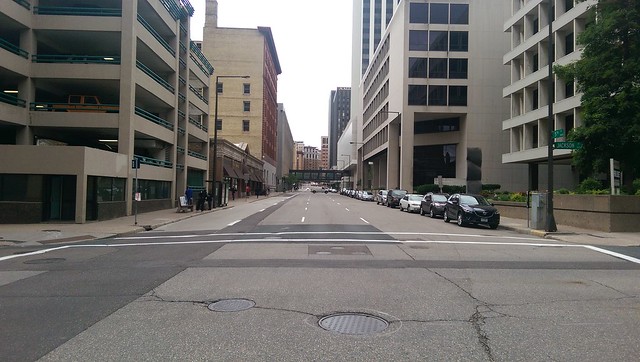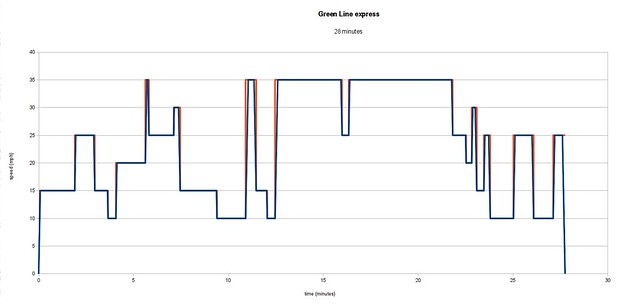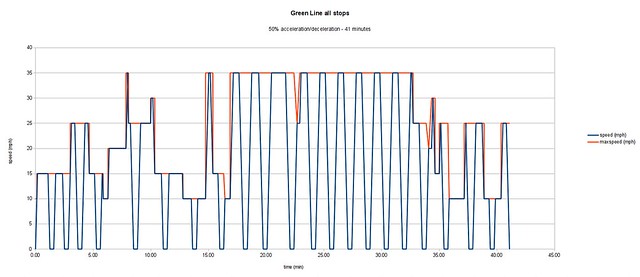
5th Street in downtown Saint Paul, noon on a Thursday.
If you grew up in Minnesota, you may have heard the story of Saint Paul's narrow streets—In downtown, the streets were so tight that the city eventually decided to shave off the fronts of buildings downtown, in order to make the streets wider.
Today, however, many of downtown Saint Paul's streets are too wide, or at least they grant way more space to cars than what is actually needed. Here's a map I made of streets in the area that appear to be wider than necessary to handle the amount of traffic they see (orange means roughly one lane too wide, red means roughly two lanes too wide):
View Oversized downtown St. Paul streets in a larger map
The new Green Line is hoped to be a new big economic driver for Saint Paul, but to maximize the benefit, we have to make sure that the areas around stations—and throughout the city—are built for people and not just the movement of cars. Sidewalks need to be widened, bike lanes need to be added, and bus lanes need to be retained and improved, including upgrading bus stops that are often put in tight spaces (especially the one on 6th Street at Cedar Street).
Personally, I like the idea of converting 5th Street to a (bus) transit/pedestrian mall with bi-directional bus traffic, since it connects directly to West 7th Street and the I-94 ramps to/from Minneapolis, links Rice Park and Mears Park, and also goes straight past the Green Line's Central station and is just one block from Union Depot. Large chunks of 5th and 6th are about twice as wide as they need to be for the amount of car traffic they see, so they could be combined into a two-way street for cars on 6th. I'm not sure which street would be better off with bike facilities—in this concept, 5th would probably be more comfortable for many riders. Buses are big vehicles, but there are far fewer of them than cars (combined, the 5th and 6th street bus lanes now appear to carry a bit over 1,000 transit buses per day).
Minnesota Street should really become a two-way, as should the stretch of Cedar Street south of 5th. Jackson Street could become a two-way (probably in addition to Sibley Street, even though that's relatively appropriately sized when the amount of on-street parking is considered). Jackson and Sibley each narrow down to just two lanes as they reach Shepard/Warner Road, so it doesn't make much sense for them to be wider to the north. Jackson is ridiculously wide north of 7th Street (a segment where it is a six-lane two-way), and really needs a major overhaul to convert it to a more pleasant space rather than a river of concrete.
There's a potential to re-make downtown Saint Paul to be a much more walkable/bikeable space. There are pockets of great spaces in the area, but the streets need work to link those places together to really revive the streets.


